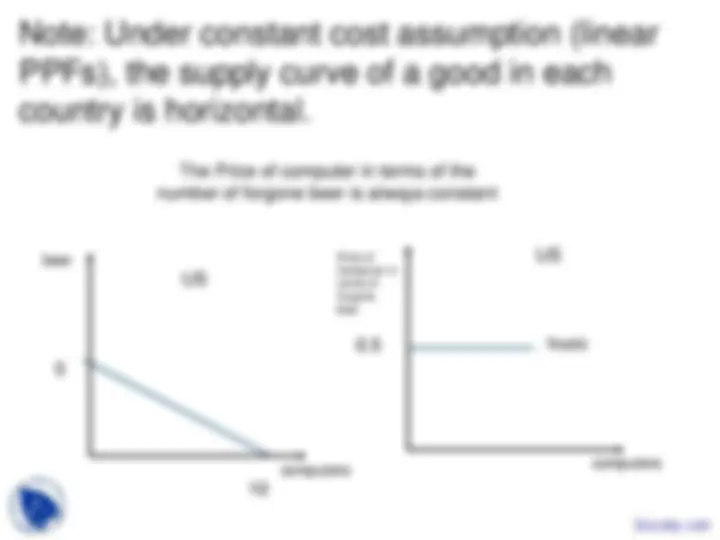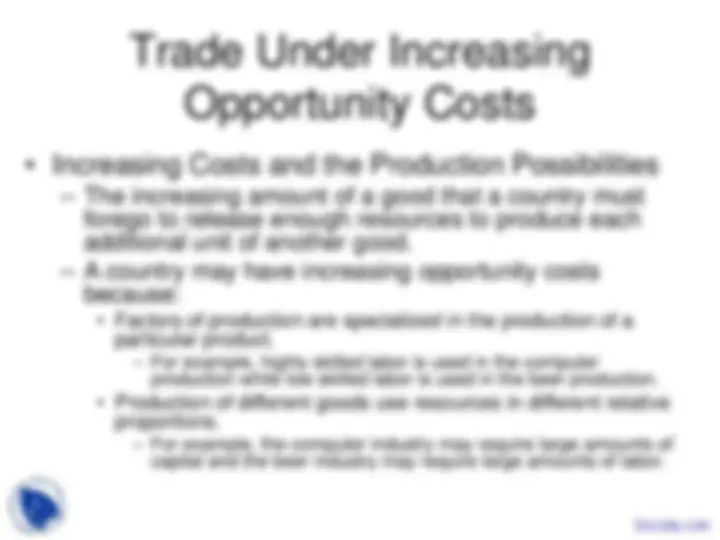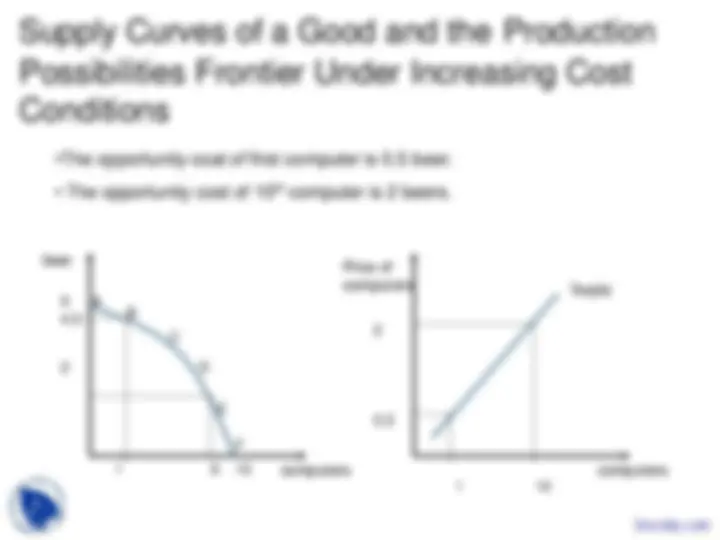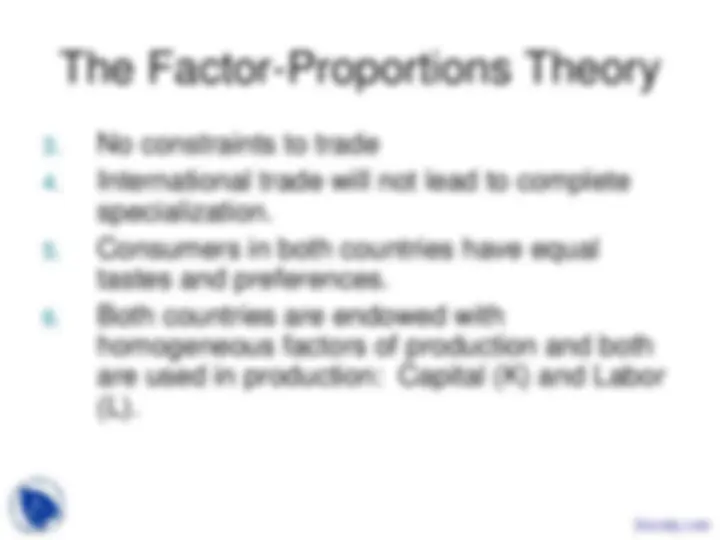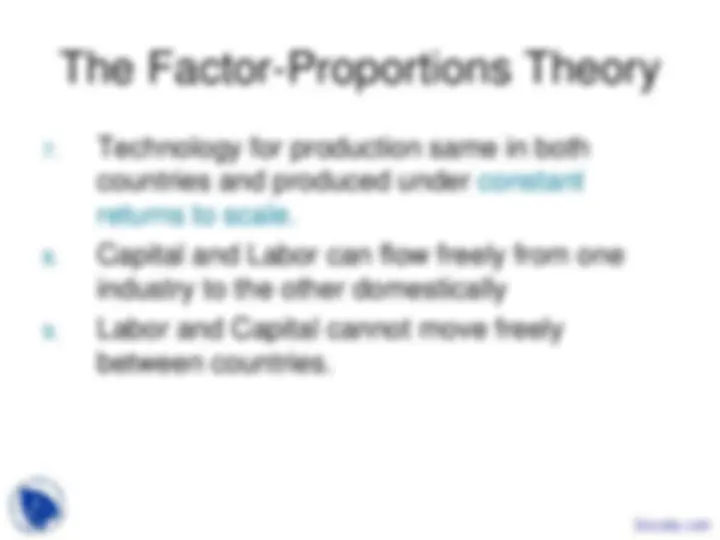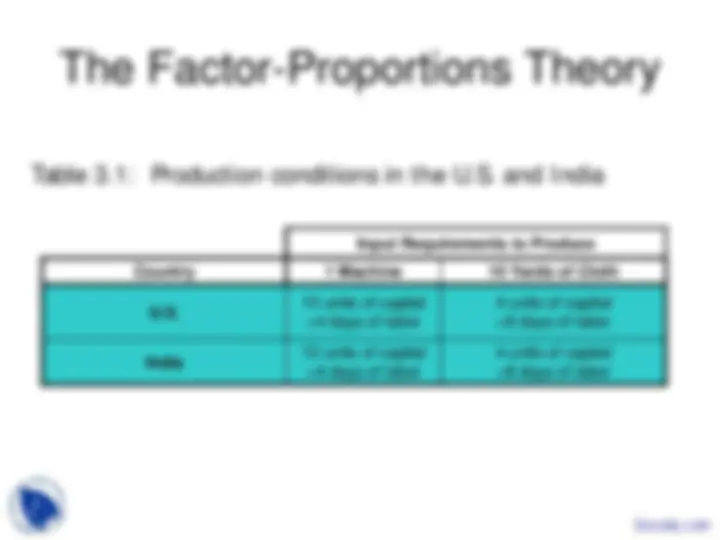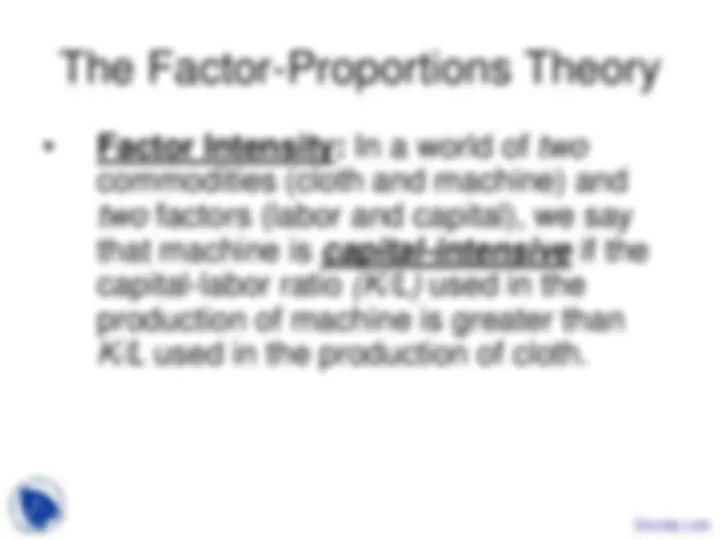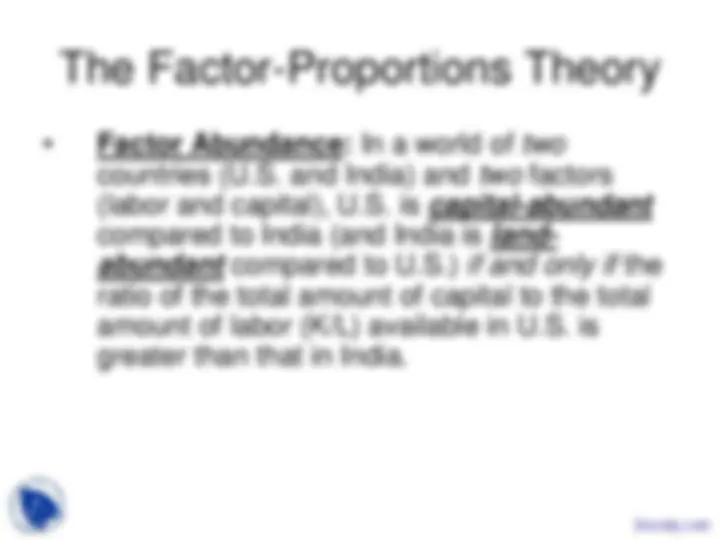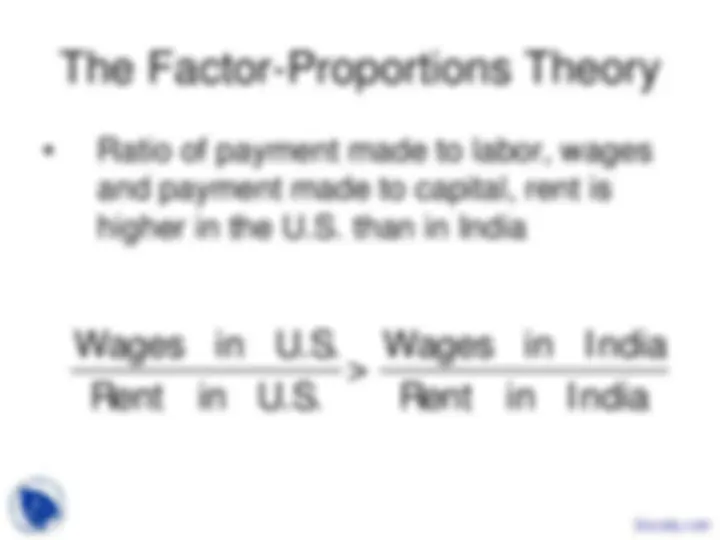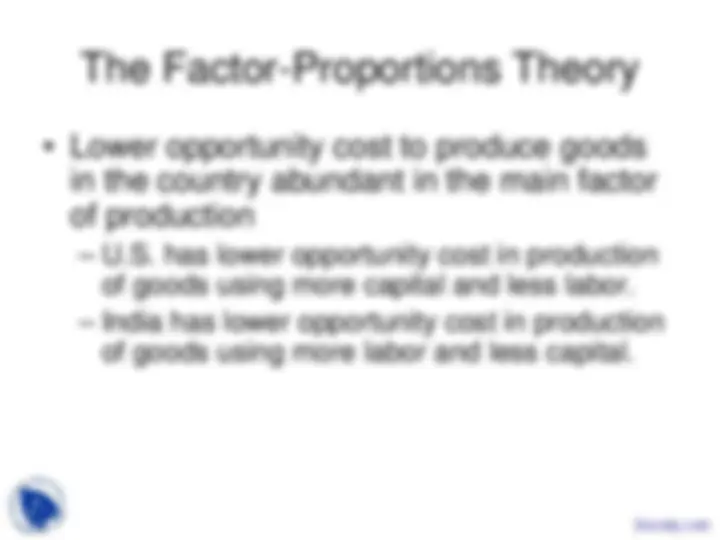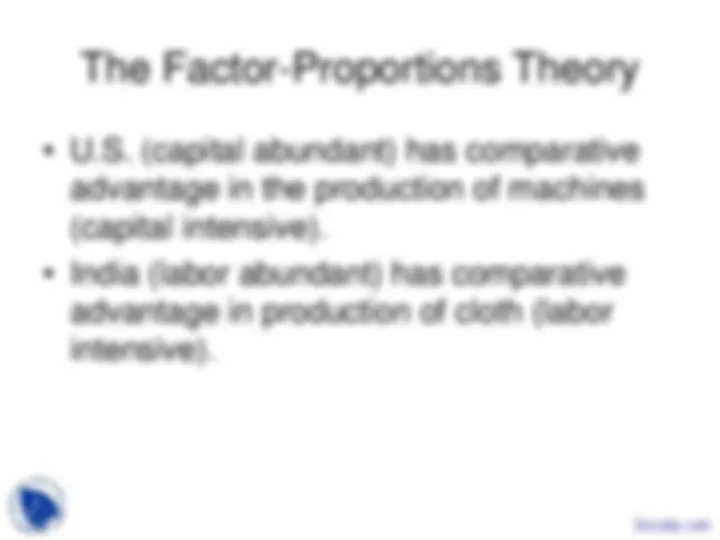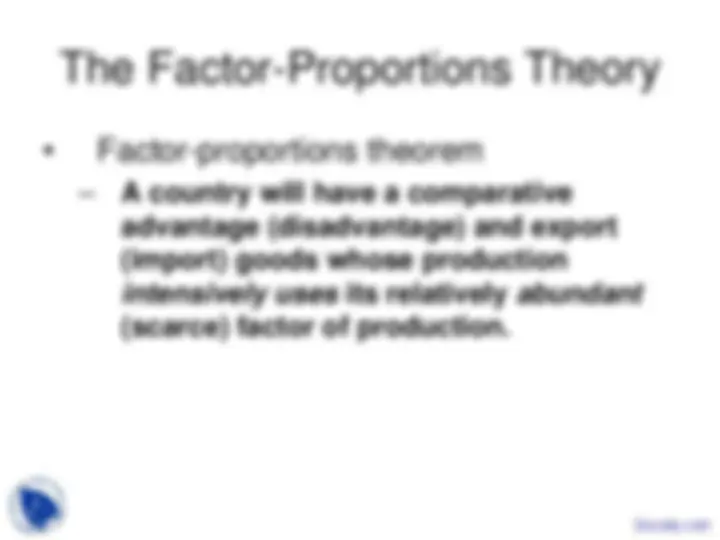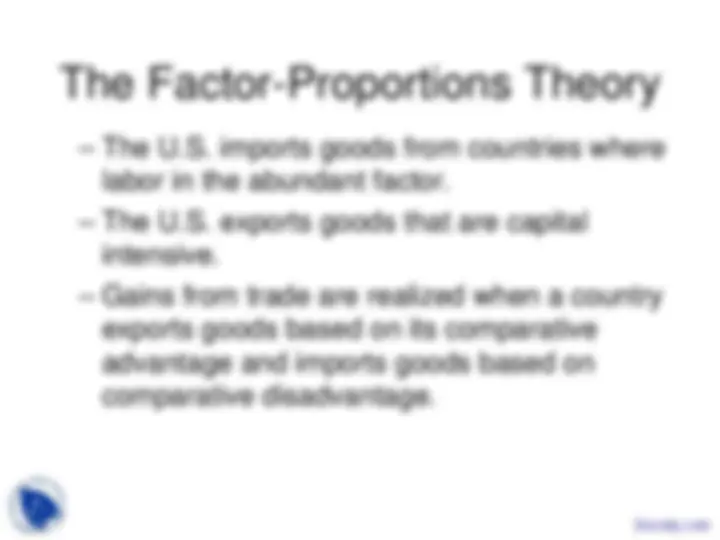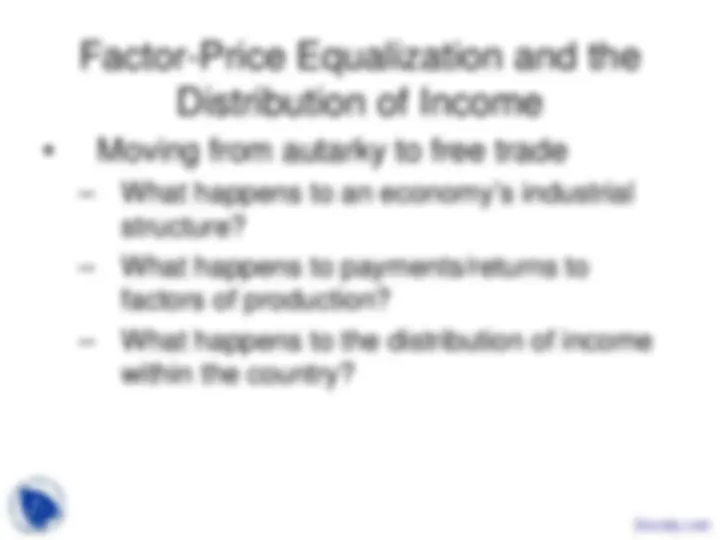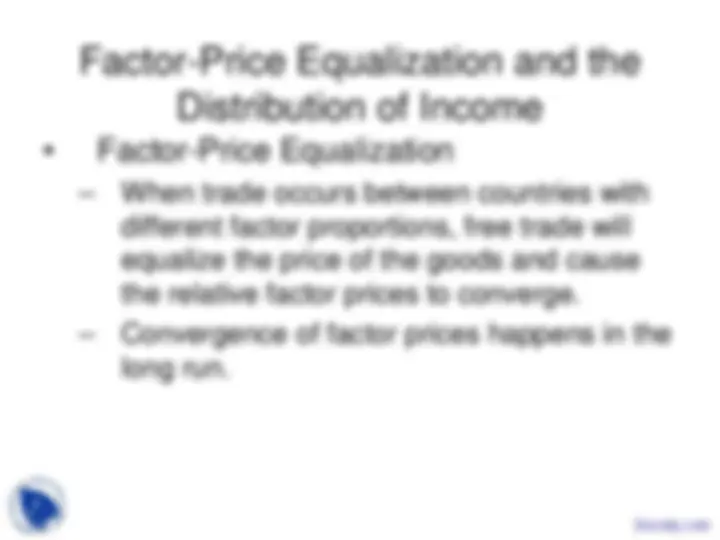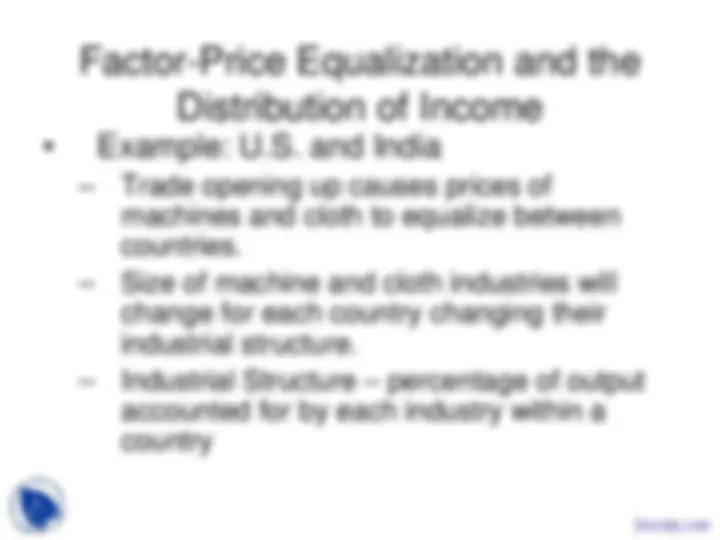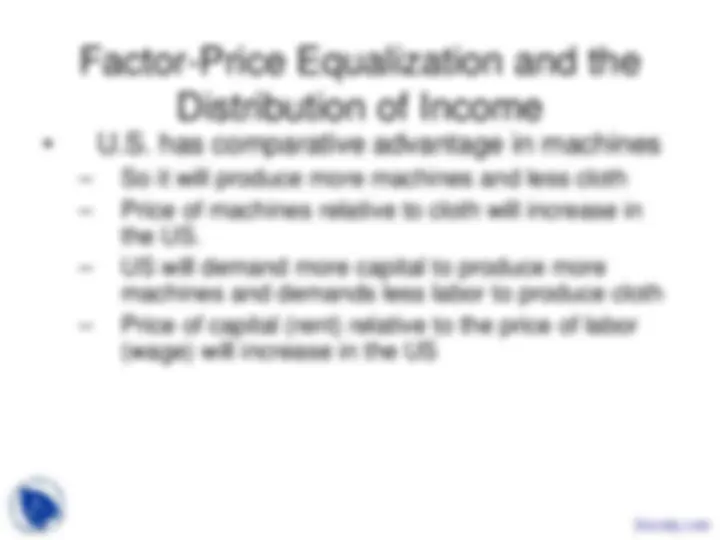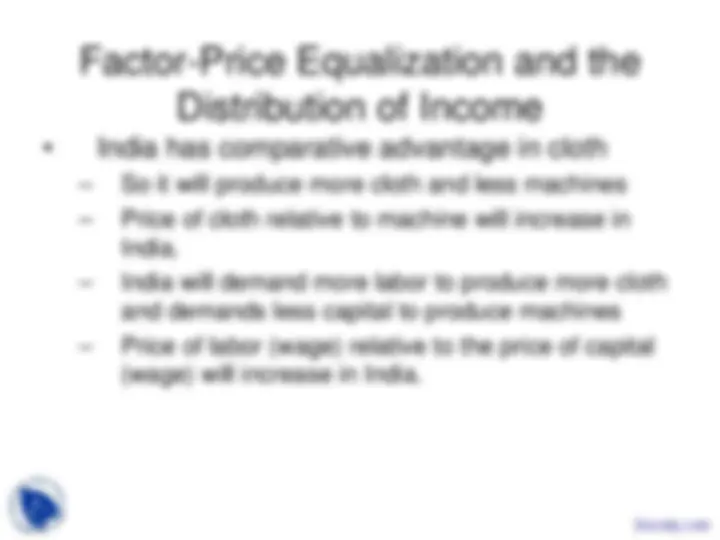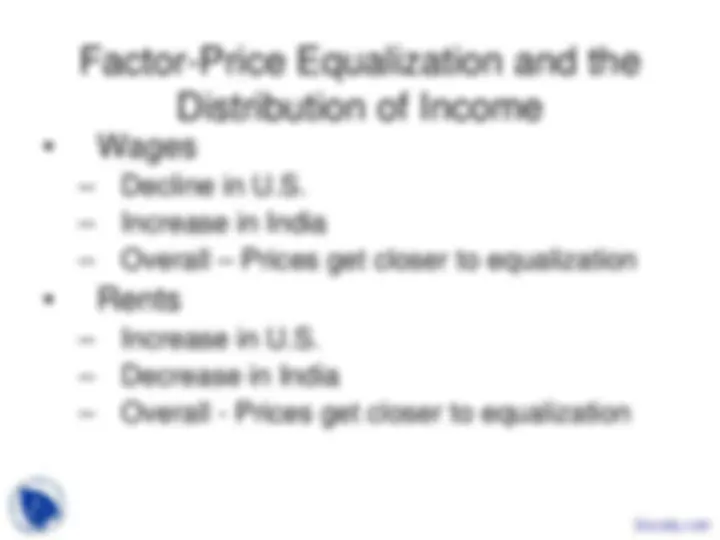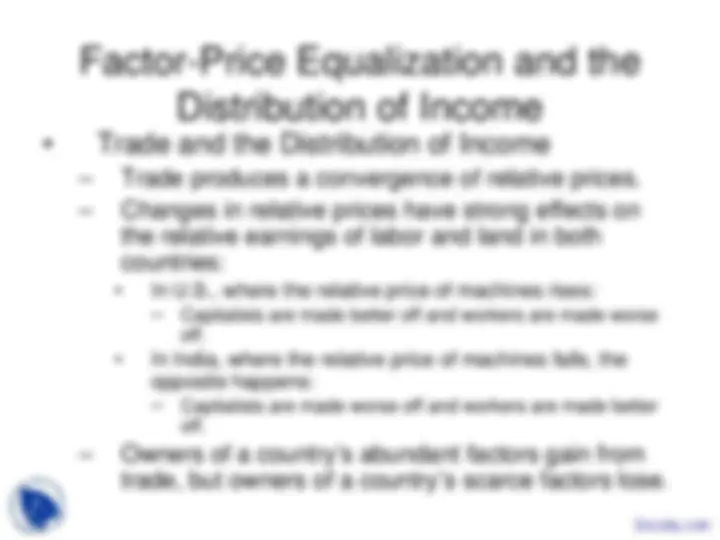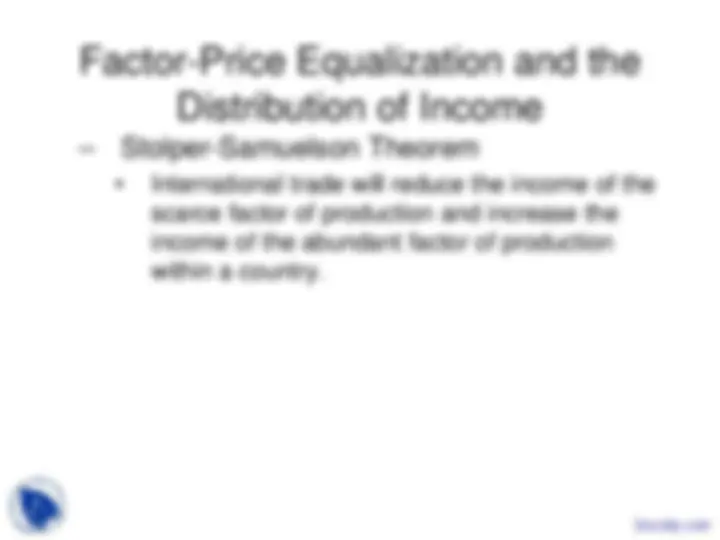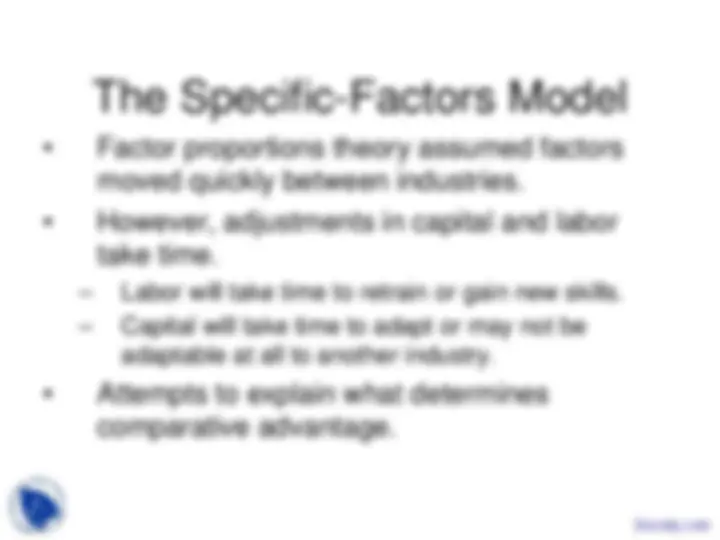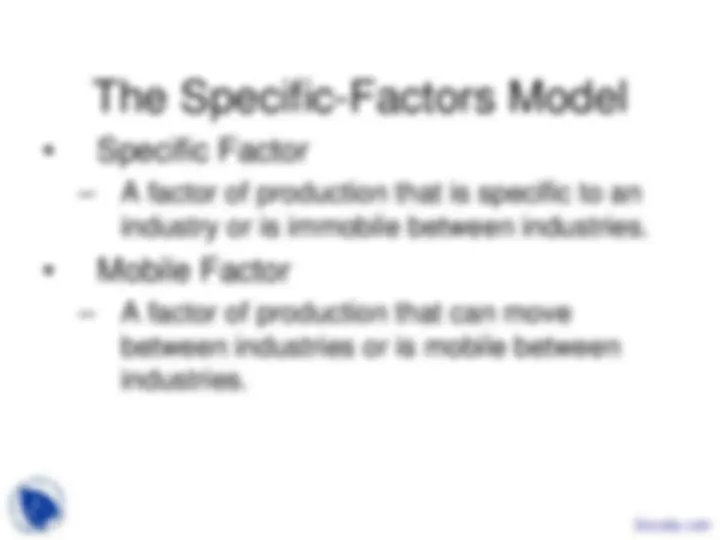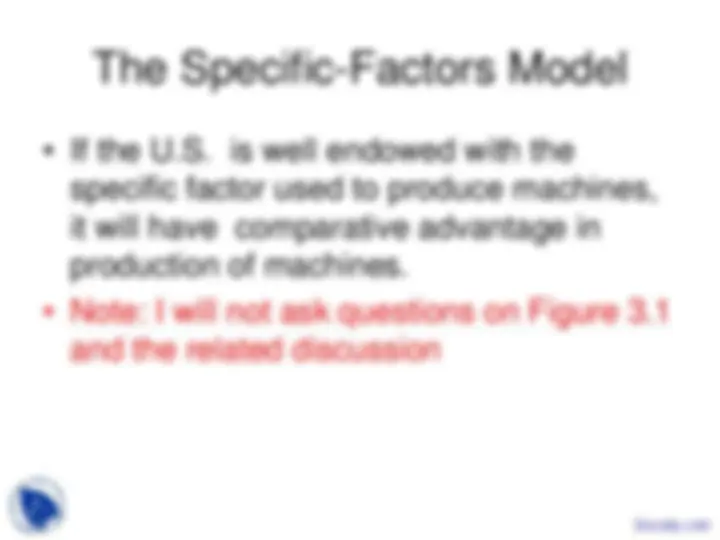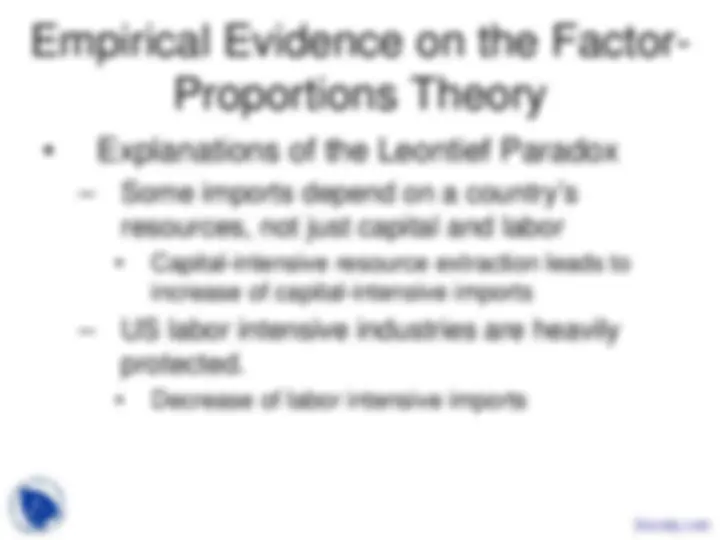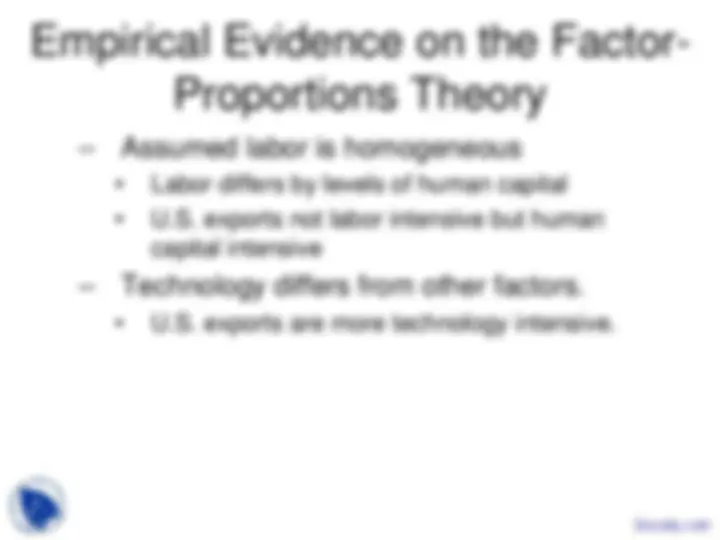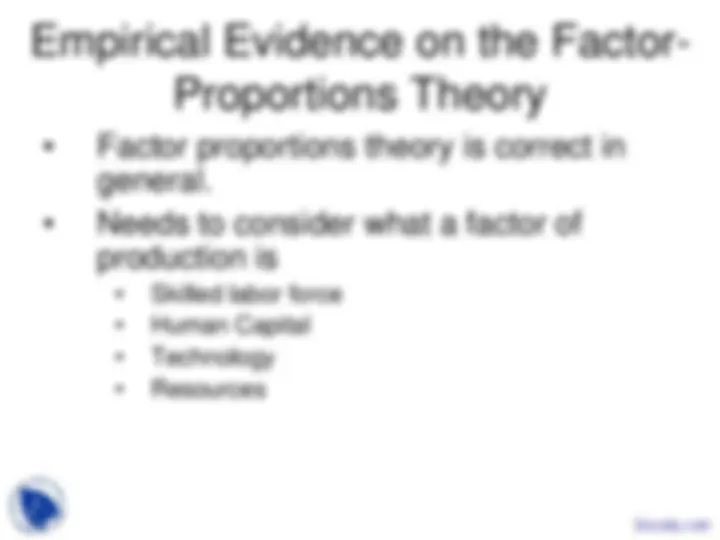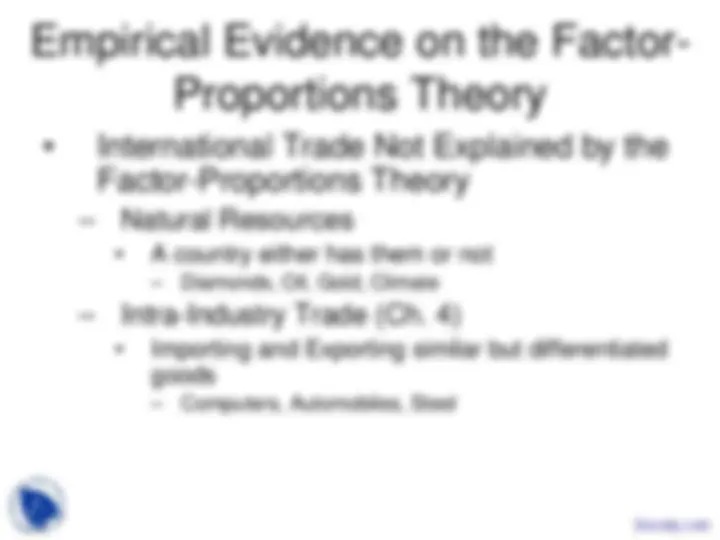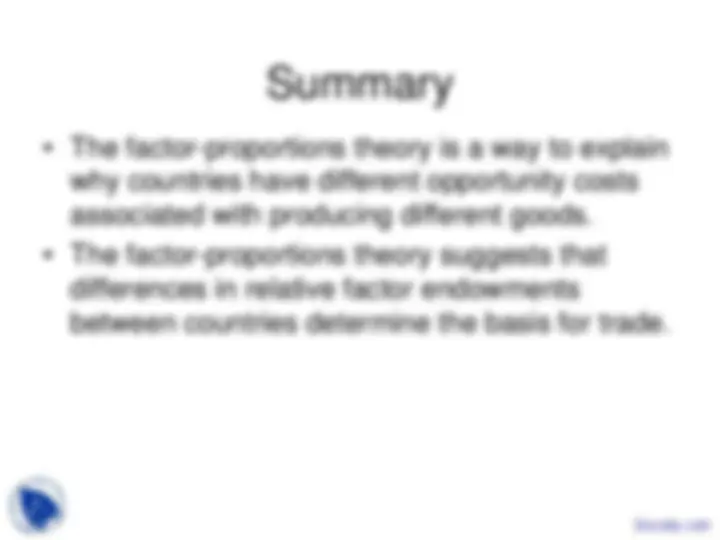Download Terms of Trade - International Economics - Lecture Slides and more Slides Economics in PDF only on Docsity!
- The terms of trade is the relative price of
the exportable good expressed in units of
the importable good.
The Terms of Trade
- In Assignment 1, remember that the range of mutually beneficial terms of trade was
- 2 computers >1beer>1 computer
- But what affects the actual exact exchange rate within this limit?
- The theory of reciprocal demand suggests that:
- The stronger the German demand for US computer, the higher the price German’s will pay for US computer, the closer the actual exchange rate will be to 1 beer for 1 computer
- The stronger the US demand for German beer, the higher the price US will pay for German beer, the closer the actual exchange rate will be to 1 beer for 2 computer
- So the actual exchange rate will depends on how strong the demand of one nation is for the other nation’s product.
The theory of reciprocal demand
- Increasing Costs and the Production Possibilities
- The increasing amount of a good that a country must forego to release enough resources to produce each additional unit of another good.
- A country may have increasing opportunity costs because: - Factors of production are specialized in the production of a particular product. - For example, highly skilled labor is used in the computer production while low skilled labor is used in the beer production. - Production of different goods use resources in different relative proportions. - For example, the computer industry may require large amounts of capital and the beer industry may require large amounts of labor.
Trade Under Increasing
Opportunity Costs
Supply Curves of a Good and the Production
Possibilities Frontier Under Increasing Cost
Conditions
beer
computers
Price of computers
computers
5 A 4.5 B
1
C 2 D E
9
F 10
Supply
1
10
2
- The opportunity coat of first computer is 0.5 beer.
- The opportunity cost of 10th^ computer is 2 beers.
- Static Gains from trade
- Gains in word output that result from specialization and trade are the static gains from trade.
- Dynamic gains from trade
- Gains from trade over time that occur because trade causes an increase in a country’s economic growth or induces greater efficiency in the use of existing resources.
Static/ Dynamic Gains From Trade
Chapter 3: The Factor-Proportions Theory (the theory attempts to
explain what determines comparative advantage.)
- Assumptions of the Factor Proportions Theory
- Two countries – U.S. and India producing two goods – machines and cloth
- Production and consumption conducted under perfect competition A. Firms are price takers. B. Prices of factors are determined by supply and demand in each market. C. In long run, prices of goods are equal to their respective costs of production.
The Factor-Proportions Theory
- Technology for production same in both
countries and produced under constant returns to scale.
- Capital and Labor can flow freely from one
industry to the other domestically
- Labor and Capital cannot move freely
between countries.
The Factor-Proportions Theory
10. Production techniques available lead to
cloth being a labor-intensive good and
machines being a capital-intensive good
in both countries.
a) Machines use a lot of capital relative to labor
- high K/L ratio. b) Cloth uses a lot of labor relative to capital – low K/L ratio.
The Factor-Proportions Theory
Table 3.1: Production conditions in the U.S. and India
Input Requirements to Produce Country 1 Machine 10 Yards of Cloth U.S. 10 units of capital +4 days of labor^ 4 units of capital +8 days of labor
India 10 units of capital +4 days of labor^ 4 units of capital +8 days of labor
The Factor-Proportions Theory
- Factor Intensity: In a world of two
commodities (cloth and machine) and
two factors (labor and capital), we say
that machine is capital-intensive if the
capital-labor ratio (K/L) used in the
production of machine is greater than
K/L used in the production of cloth.
The Factor-Proportions Theory
- The Factor-Proportions Theorem
- Assume that U.S. and India have the same tastes: When faced with the same relative price of the two goods, U.S. and India have identical relative demands for machines and cloth.
- Assume that both countries have the same technology: A given amount of capital and labor yields the same output of either cloth or machines in the two countries.
- The only difference between the countries is in their resources: U.S. has a higher ratio of capital to labor than India does.
The Factor-Proportions Theory
- Before trade
- Capital less expensive in capital-abundant country – U.S.
- Labor less expensive in labor-abundant country - India
The Factor-Proportions Theory
- Lower opportunity cost to produce goods
in the country abundant in the main factor
of production
- U.S. has lower opportunity cost in production of goods using more capital and less labor.
- India has lower opportunity cost in production of goods using more labor and less capital.
The Factor-Proportions Theory
- U.S. (capital abundant) has comparative
advantage in the production of machines
(capital intensive).
- India (labor abundant) has comparative
advantage in production of cloth (labor
intensive).

